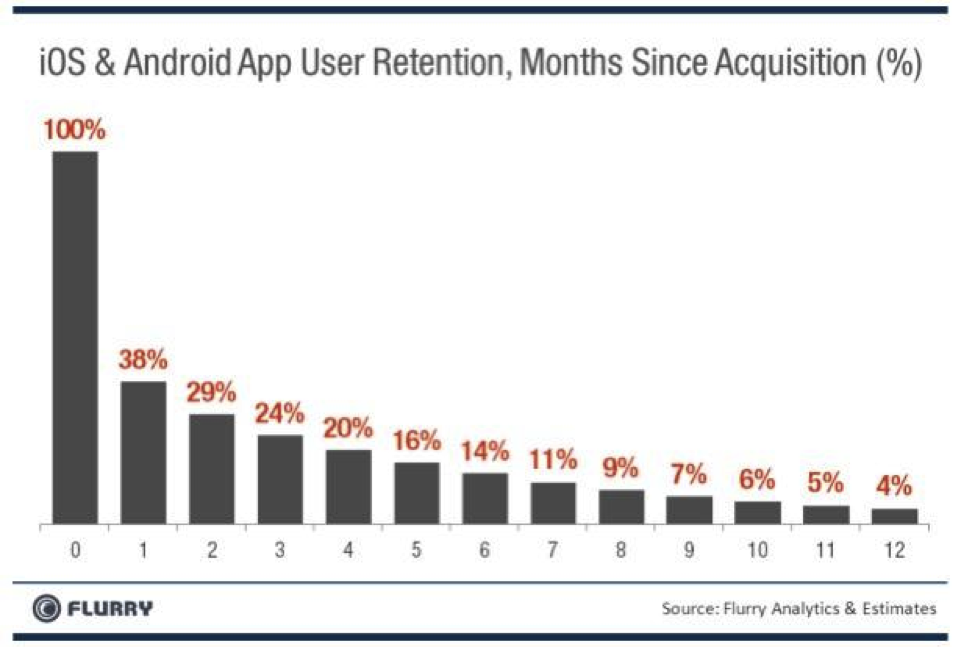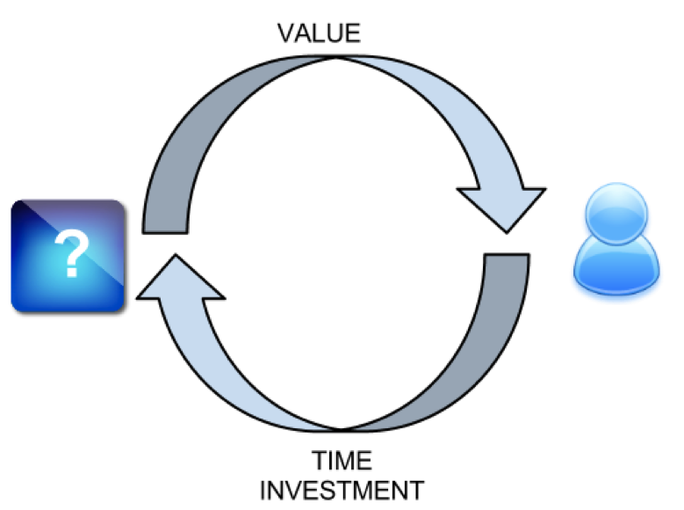This is a guest post by Yaniv Nizan who is the CEO and Co-Founder of
The SOOMLA Project
, the platform for Creating In-App Purchase Stores for Mobile Games. Yaniv also writes in 4 different blogs including
blog.soom.la
, speaks in different industry events about gamification and game design and tweets
@y_nizan
.
Gamification is the practice of using game mechanics in a different context with a goal to engage users
Mobile apps are in fierce competition these days. There are over one million apps available in the different marketplaces and while a user may install a large number of apps on his device. Recent research by Flurry shows that users don’t use many apps for very long and in fact only 25% of the apps survive after 3 months.
This is one of the main reasons why app developers need to invest a lot of resources in engaging the users and increasing the average length of activity for the users. One interesting way of doing that is through the user of gamification. Games are very popular in smartphones and most users are already accustomed to playing games on their mobile devices so the fit seems very natural here.
Digging a bit deeper into gamification, there are a few basic game mechanics that are suited for gamifying most mobile apps: Goals or Achievements, Problem Solving and Awards. I’m deliberately leaving social out since it is not a purely game related. It is present in some games and in some apps. On top of the game mechanics gamification is also about making elements more responsive and providing instant gratification. These are easier to do on touch devices but not all apps are utilizing the power of this approach.
So now that we know what Gamification is, let’s define the goal in the context of a mobile app. The idea here is to get the user in the engagement loop. The engagement loop is achieved when the user invests time in order to improve his value from the application and then he is willing to invest more time which will increase the value and so forth. The more iterations of this loop, the better the
app engagement
will be.
Here is how we can combine all of these together:
Tip 1 – Creating Engagement Opportunities for the User
This is a key component in creating the engagement loop. You app needs to have elements that allow users to invest time and get more out of the app. One easy example for this is profile building. In apps that provide social interaction, investing time in your profile is not a required step but the more a user invests time in it, the better his experience will be. Same goes for apps that allow you to import your friends from other social networks. The more time you invest, the more engaging the app is likely to be for you.
Tip 2 – Encouraging Your Users to Invest the Time through Achievements
While the user does get value from investing his time, he doesn’t get it right away. This is part of the reason why it’s important to provide a more instant gratification even for an action that is good for the user. NOTE – it’s important not to provide short term rewards for actions that will end up hurting the user – this can backfire and produce a negative result. Easy elements that can be added to encourage users are progress bar for completing his user profile or awards for connecting and inviting friends.
Tip 3 – Guide Users about the Value They Can Receive
Once your app users invested time and unlocked more value. You can add responsive UX that guides them about opportunities to get more value as they appear. This could be anything from friend recommendations to relaying on the app for day to day tasks. If we take one example, a task management app can encourage users to connect the app with the calendar app through achievements and awards. Once the calendar app is connected, the task management app can recommend the user to add tasks after a meeting.
Tip 4 – Getting Rid of Clutter via Smart Unlocking
While great apps allow users to get tremendous value, they also need to be very simple. The conflict here is that the more functionality you add to the app the more it is becoming more complicated. Luckily, gamification does provide a solution. Provided that you are already maintaining some score about the user, you can gradually unlock features based on his score or level. This approach allows you to keep the first experience simple and gradually add more value later on.
Tip 5 – Reward your Key Users
Every successful app has users that evangelize the app and explain others how to get value from it. While you can design a great UX with guidance and tutorials, nothing beats a friend explaining the user how to use the app and showing him the end result. This is not about getting buzz by soliciting likes on Facebook. This is about finding the few that are really excited about the app and gamifying their evangelism activity. You could have awards such as the Educator, the Trainer and you could reward users for repeatedly mentioning your app.
Notice: This post was automatically converted using a script from an older blogging system. Some elements might not have come out as intended…. If that is the case please let us know via the comments section below.







4 Comments
Great post guys!
Keep up the good work!
Very cool. Thanks for the post!
Thanks for this post. Do you have any examples of utility apps that do this well? Eg, Telecoms, banking, power etc
thanks for sharing this informative post about mobile app.
[http://www.nanoarchsoftware…](http://www.nanoarchsoftware.com/Services/mobile-application)
.